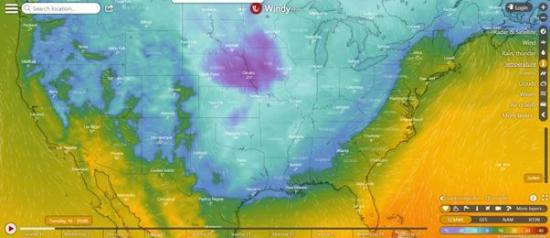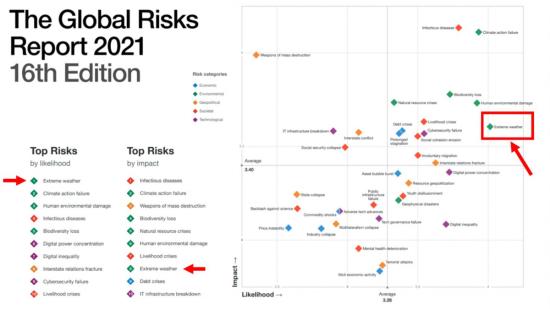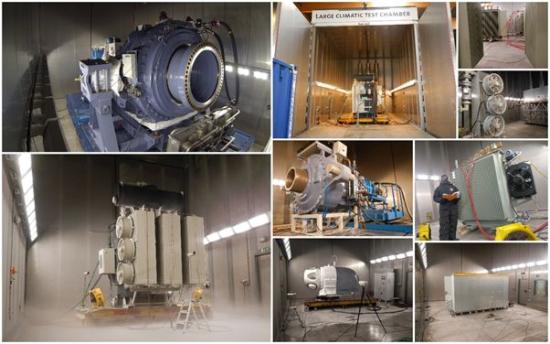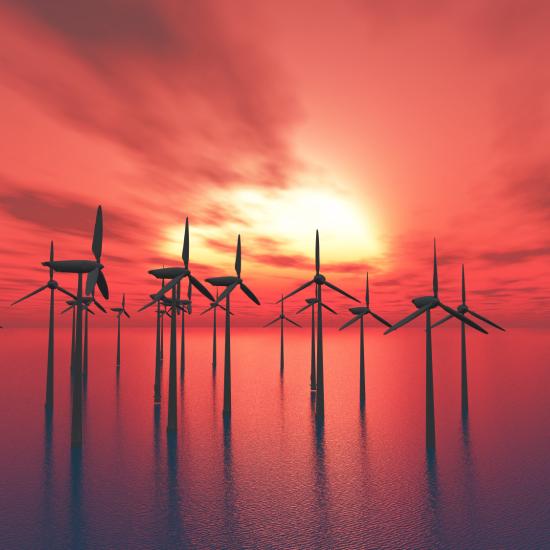Expecting the unexpected’ was a hard lesson Texas had to learn last week, when it was hit by extreme cold weather conditions. What can such occurrences and the global risk report 2021 teach us for the future?
Last week, Texas was taken by surprise by some “extreme” cold weather snaps, causing blackout situations (30 GW went down!), which are not fully resolved yet, unfortunately. Even the water supply system is in jeopardy now after thousands of pipes burst. The winter conditions affected all power production units from natural gas, coal, nuclear and renewables. The Texas conditions (-22 °C was measured at some sites - see the weather conditions in the figure below) are indeed cold, but power units in other countries such as Canada need to withstand harsher conditions down to -40 °C and even lower in some locations. The difference is that it is rather a rare event for a location as Texas and the machinery is most likely not designed or parameters are not set for these conditions today. On the other hand, such situations did happen before, the FERC/NERC Staff Report on the 2011 Southwest Cold Weather Event report includes similar issues as we see today. Lessons learned from that event could have saved a lot of misery, power downtime and money.
On social media some messages are blaming wind turbines of not being able to work in winter conditions, which caught our attention. Let’s wait for the root cause analyses of this winter event, but the analysis of the “2011 Southwest Cold Weather Event” teaches us that blade icing and low temperature wind turbine cut-outs caused the loss of 1.946 MW of capacity out of 22.805 MW in total at the time.
Test to improve reliability & operations of critical infrastructure
At Sirris / OWI-Lab we have been testing wind turbines and their components for extreme climatic conditions as they occur in locations such as Scandinavia, Alaska, Canada, and Inner Mongolia for more than 10 years now. We have functionally tested wind turbine equipment even down to -45 °C conditions in some special cases. In some cases, by testing such conditions certain design changes were made or sensor parameters were adapted, to work in these conditions. Wind turbine OEMs and their component suppliers design the machines so they are able to operate and survive during specific site conditions. If the machines are installed at sites were extremes are expected, dedicated features or packages can be foreseen to work in extreme cold, icy environments, hot climates or in humid offshore conditions. Of course, this comes with a price surplus.
Developers and asset owners who purchase these machines, need to consider what kind of add-ons or features are needed for the specific site location. They need to assess if a “cold climate package” for example (which includes additional heaters, specific materials and lubricants, ice detection and de-icing features) is needed, in order to ensure efficient and reliable operations during the lifespan of the project. Of course, this is an economic cost-benefit consideration. Historic events of this kind, as seen in Texas, might be a driver to invest in dedicated add-ons.
Global Risk Report 2021
Last week’s cold weather issues illustrate that investors, developers and asset owners need to think about “the unexpected”, as extreme climate events, either in wintertime but also in summer (also cooling can be an issue for machines), occur more frequently than before (and probably will be occurring even more frequently).
The Global Risk Report 2021 clearly indicates that extreme weather scenarios (either cold snaps or heat waves) are a top risk by likelihood. Within the 20-25 years lifespan of a wind turbine nowadays this means the chances are high to experience certain extreme weather events. The same applies to other power equipment and industrial machinery in general.
In order not to face unexpected issues with any kind of machinery or application we need robust, reliable and well-tested machinery – specifically for (mission) critical operations and infrastructure.
Question of the week
Will the “Texas freeze” event mean that limits and features of “standard” wind turbines (operating and survival) have to be re-evaluated, taken into account the likelihood of extreme weather events worldwide – will we expand the limits to be more robust for such events, or will developers pay more attention to this topic in the siting and procurement process by considering specific weather packages?
I would like to conclude this article with a quote published in the NY Times last week, that is food for thought to all involved:
’Preparing for extreme events is like buying home or health insurance: it costs you every year and you hope you’ll never use it. But when a crisis strikes, paying the premiums can look like the perfect decision in hindsight.’ - Jesse Jenkins assistant professor and energy systems engineer at Princeton University”
If you consider testing your machine (wind turbine or any other) for the extremes that might occur over the product’s lifetime, in order to be prepared for the worst case conditions worldwide, and to minimize potential downtime during extreme conditions: contact us!
Testing infrastructure for extreme (winter) conditions
Interested in our research, infrastructure and our offer?
From 19 to 21 April 2021 we will be participating in the virtual Winterwind conference with a virtual exhibition stand, showcasing our unique test infrastructure for cold and icy conditions. A new icing test bench will be showcased and our ongoing research as part of COOCK Fighting Icing and the European Newskin project both dealing with the challenges of icing conditions.
The COOCK project Fighting Icing in particular is translating the state-of-the-art knowledge and solutions to detect, prevent and mitigate icing problems in various applications to structured and concrete methodologies for implementation. Specific attention is given to atmospheric icing in low and moderate temperate climates, such as in Belgium and similar regions.
Articles of interest:
Why Wind Turbines In Cold Climates Don’t Freeze: De-Icing And Carbon Fiber
'Disgraceful': furious blame-game erupts over wind as millions endure Texas blackouts






